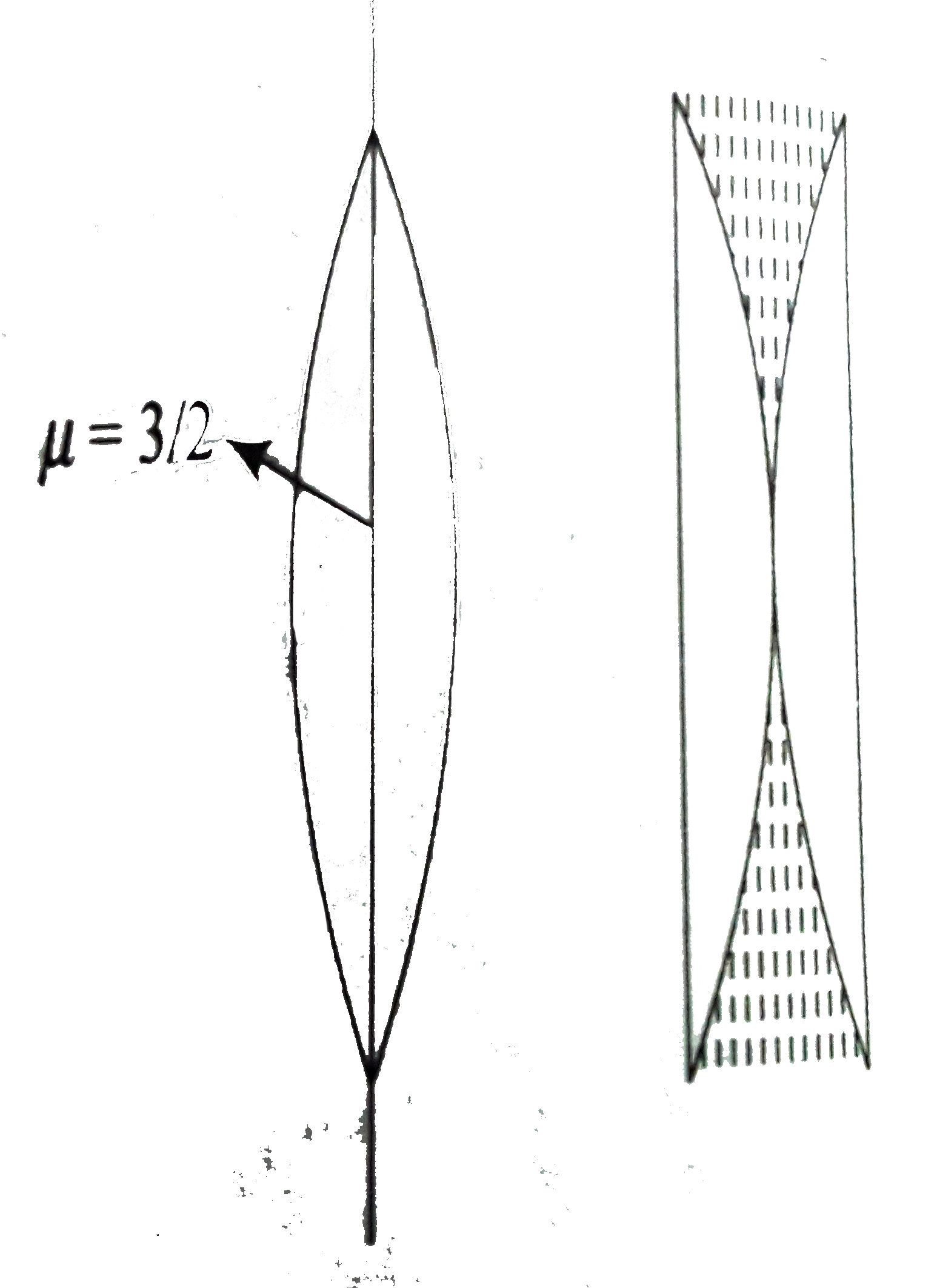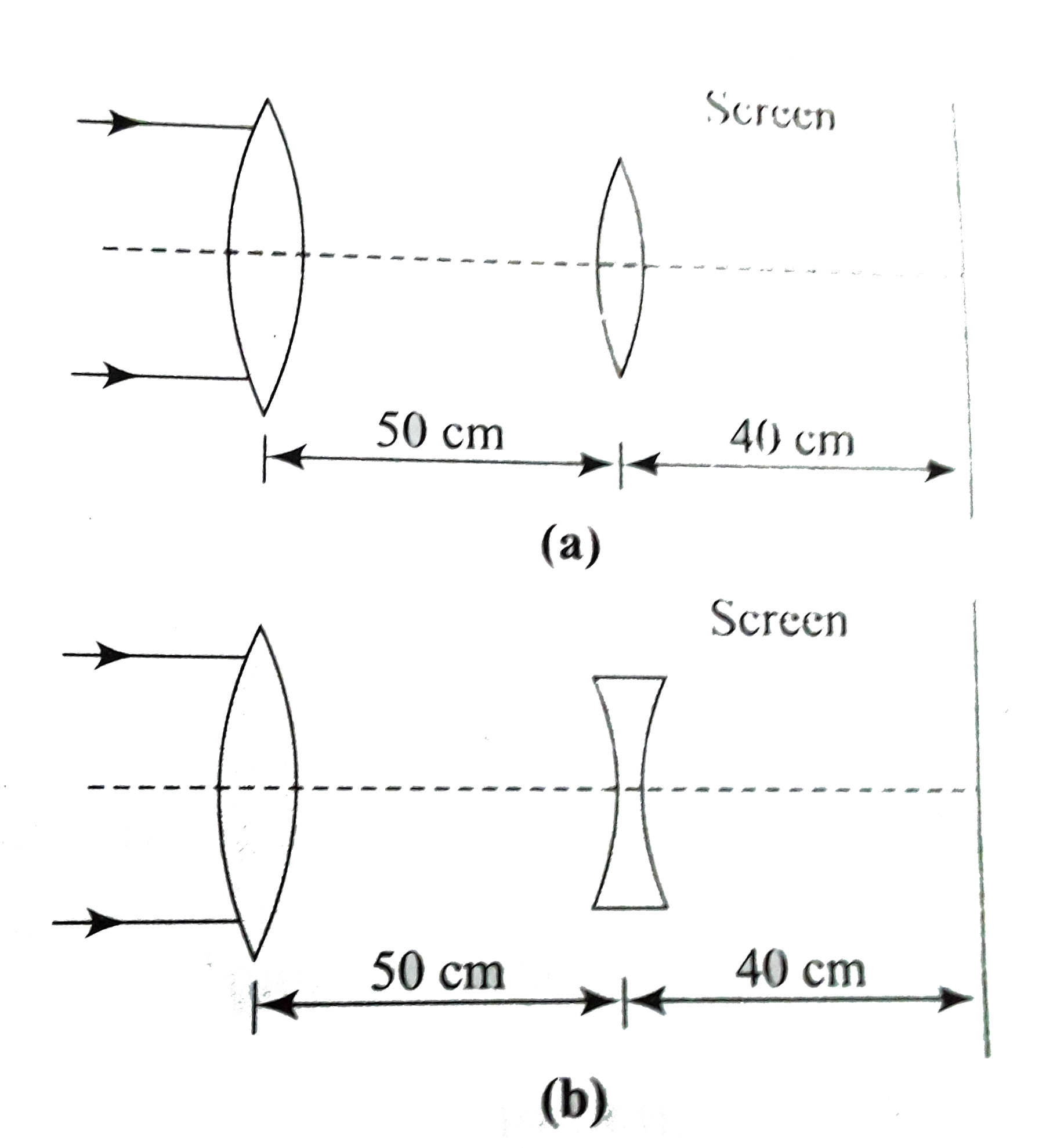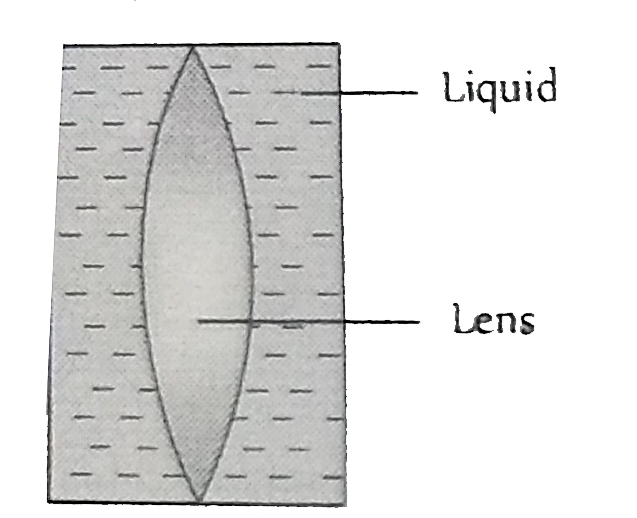A thin equiconvex lens (μ=3/2) of focal length 10cm is cut and separated and a material of refractive index 3 is filled between them. What is the focal length of the combination?

2.5cm
10cm
−2.5cm
−10cm
The correct Answer is:A
Step by step video & image solution for A thin equiconvex lens (mu=3//2) of focal length 10cm is cut and separated and a material of refractive index 3 is filled between them. What is the focal length of the combination? by Physics experts to help you in doubts & scoring excellent marks in Class 11 exams.
Topper's Solved these Questions
- BOOK - DC PANDEY ENGLISHCHAPTER - RAY OPTICSEXERCISE - B. More than one option is correct20videos
RAY OPTICS
- BOOK - DC PANDEY ENGLISHCHAPTER - RAY OPTICSEXERCISE - C. comprehension type question14videos
RAY OPTICS
- BOOK - DC PANDEY ENGLISHCHAPTER - RAY OPTICSEXERCISE - Integer type q.14videos
RAY OPTICS
- BOOK - DC PANDEY ENGLISHCHAPTER - PROPERTIES OF MATTEREXERCISE - Integer8videos
PROPERTIES OF MATTER
- BOOK - DC PANDEY ENGLISHCHAPTER - ROTATIONEXERCISE - (C) Chapter Exercises39videos
ROTATION
Similar Questions
Knowledge Check
- Question 1 - Select One
Two identical glass (μg=3/2) equiconvex lenses of focal length f are kept in contact. The space between the two lenses is filled with water (μw=4/3) . The focal length of the combination is
AfBf2C4f3D3f4
A parallel beam of light falls successively on a thin convex lens of focal length 40 cm and then ono a thini convex lens of focal length 10cm as shown in figure.
In figure, the second lens is an equiconcave lens of focal length 10cm and made of a material of refractive index 1.5. In both the cases, the second lens has an aperture equal to 1cm.

Q. Now, a liquid of refractive index μ is filled to the right of the second lens in case B such that the area illuminated in both the cases is the same. Determing the refractive index of the liquid.View SolutionA converging lens of focal length 40 cm is kept in contact with a diverging lens of focal length 30 cm. Find the focal length of the combination.
View SolutionA parallel beam of light falls successively on a thin convex lens of focal length 40 cm and then ono a thin convex lens of focal length 10cm as shown in figure.
In figure, the second lens is an equi-concave lens of focal length 10cm and made of a material of refractive index 1.5. In both the cases, the second lens has an aperture equal to 1cm.

Q. Compare the area illuminated by the beam of light on the screen, which passes through the second lens in the two cases. The ratio (A2/A1) will beView SolutionTwo identical glass (μg=3/2) equiconvex lenses of focal length f are kept ini contact. The space between the two lenses is filled with water (μw=4/3). The focal length of the combination is
View SolutionAn equiconvex lens of focal length20 cm is cut into two equal halves perpendicular to the principal axis and kept at a separation of 10 cm co-axially. What ils the focal length of the each part is?
View SolutionA thin biconvex lens of focal length 6.25 cm is made of material of refractive index 1.5. It is cut into two identical pieces perpendicular to its principal axis. One of the pieces is placed in water of refractive index 43. The focal power of the piece immersed in water in diopter is
View SolutionShown in the figure here is a convergent lens placed inside a cell filled with a liquid. The lens has focal length +20cm when in air and its material has refractive index 1.50. If the liquid has refractive index 1.60, the focal length of the system is
 View Solution
View Solution

